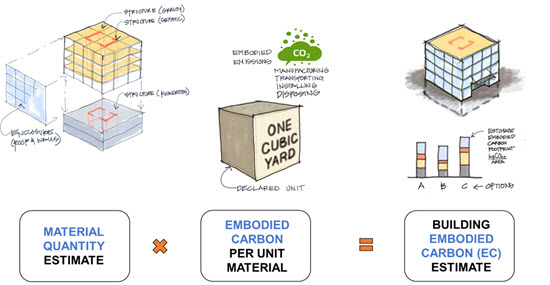Kate Simonen favors a metaphor about the moon when she talks about her work as director of the Carbon Leadership Forum. It goes something like “If you want to land on the moon, there’s no sense in aiming halfway.”
It’s an apt comparison, because her organization’s goal of decarbonizing the built environment is certainly universal in its scope. And the CLF is not aiming halfway when they say “Better buildings for a better plan” in their vision statement.
Simonen, who also serves as chair of the architecture department at the University of Washington, will speak as a keynote at the ASCE Virtual Technical Conference, Sept. 14-18. She talked with ASCE News about the Carbon Leadership Forum’s ambitious mission, and why decarbonization could be a pathway to innovation for civil engineers.
 ASCE News: Can you explain what exactly the Carbon Leadership Forum is about?
ASCE News: Can you explain what exactly the Carbon Leadership Forum is about?
Kate Simonen: The Carbon Leadership Forum is a group of building-industry professionals, academics, owners, policymakers, engineers and architects all working together to take bold steps toward decarbonizing the built environment.
We’re focused on embodied carbon or emissions from building-material manufacturing, but that’s fit into a bigger goal of transforming the building sector into being totally decarbonized.

ASCE News: And when you talk about transforming the building sector, you’re really focused on the very beginning of the process, right?
Simonen: When we look at buildings, you look at operating them – so that’s heating, cooling, lighting, power, and things like that. But there are also the upfront impacts that happen before you even occupy a building, and that’s from manufacturing building materials. That’s the steel mills, cement kilns, truck transportation, factories and all of the things that come together to make the building itself.
And in buildings we’ve spent a lot of time focused on operating impacts, which makes sense, because those effects are significant. But when we look at meeting global climate targets, we need to decarbonize across all sectors, and building-material manufacturing is a significant chunk of the global greenhouse gas emissions pie. The building sector is consuming a massive amount of materials and making those materials has an impact.
So we see that we have a responsibility to both understand what are options are for lower-carbon materials and to use those materials effectively and efficiently.

ASCE News: How have you fostered collaboration to meet this goal?
Simonen: First off, it’s been incredibly exciting for me professionally. I see that there is a hunger and a real commitment to make impact beyond conventional practice that goes across disciplines and across geographies.
One of the really exciting things that’s happened in the past couple of years is we’ve recognized that the amount of change that’s needed requires a massive number of people. So our work isn’t just about understanding how something could be done, it’s about communicating it and building up that network.
So the Carbon Leadership Forum shifted tactics about two years ago toward building collective impact through empowering individuals to act. We’ve established a structure for volunteers to set up regional hubs and topic-area hubs focused on embodied carbon, and what we’re seeing is these in-person groups are forming from Atlanta to Vancouver, from London to Hong Kong; individuals taking action in their individual practices, who are interested in and committed to sharing what they’re learning and collaborating with others to advance this work.
We don’t have the time to not share and not collaborate in this area. It’s a tricky challenge. How do we build strong, resilient, beautiful, useful buildings that are materially efficient and drive toward low-carbon material manufacturing? There’s no easy answer to that. Therefore, we need all perspectives, from the manufacturer to a structural engineer to a building owner, to come together to find solutions.
I also see a lot of really great leadership from young professionals, and that’s really exciting.
ASCE News: So what’s the next big thing you’re looking to achieve?
Simonen: I sort of fixate on 2030 and 2050, in terms of timelines – 2050 being where global consensus has us needing to get to zero greenhouse gas emissions; and 2030 having close to or more than 50 percent reductions needed to keep us on target to not going over our tipping points.
Those can be daunting targets. It’s kind of hard to imagine how you might be able to decarbonize that quickly. And yet on the other hand, they’re also exciting and ambitious goals.
It means we need to start taking concrete steps today that give us a chance of getting there. There are so many tactics which we have to explore – especially using the abilities we have right now effectively: retrofitting buildings, maintaining our current infrastructure, being really judicious about what and how we build.
There are solutions that are market-ready, ranging from carbon capture to innovative materials. And there are really exciting innovations and the possibility of using bio-based materials in new ways: growing materials, using existing biomass from bamboo or rice husks as building products so that we’re storing carbon that’s coming out of the atmosphere through biosynthesis and turning it into long-life building products.
So what do we see as next steps? I think that the first goal is having more people understanding that there is a lot of opportunity here for innovation. Investing in low-carbon manufacturing means we can be growing jobs and growing buildings in an innovative way. So this is not a negative; it’s an exciting opportunity to build toward the future.


